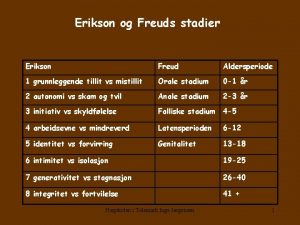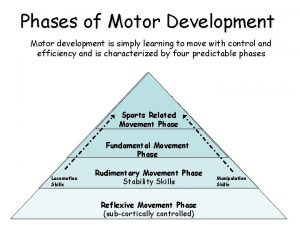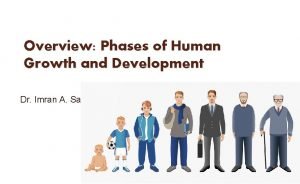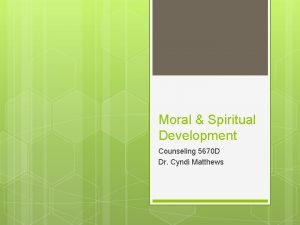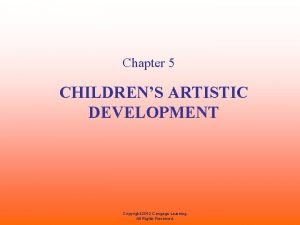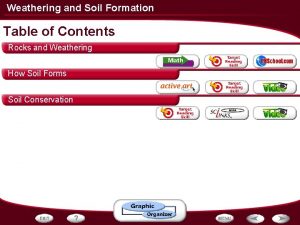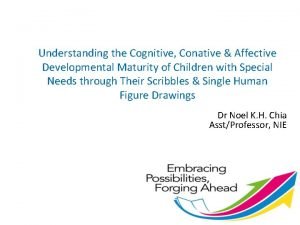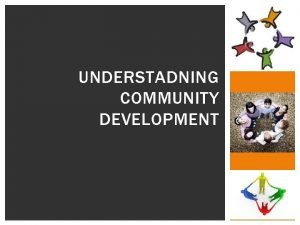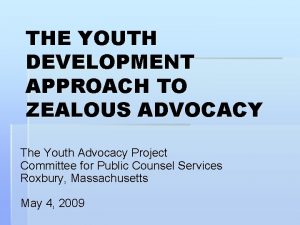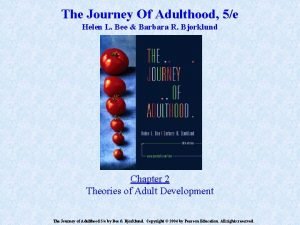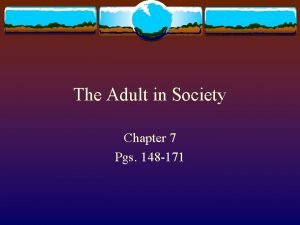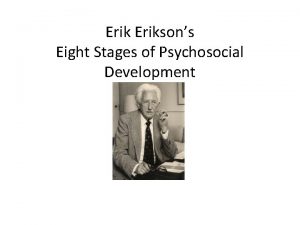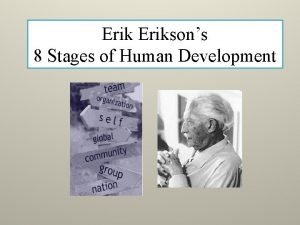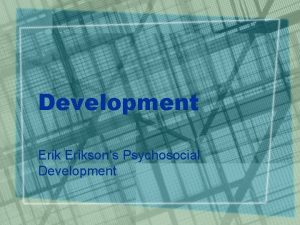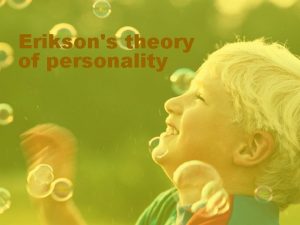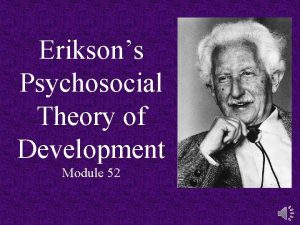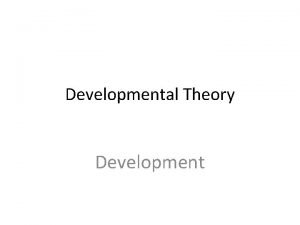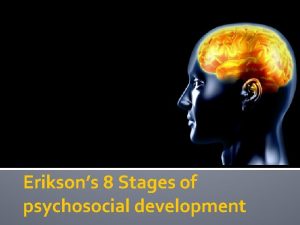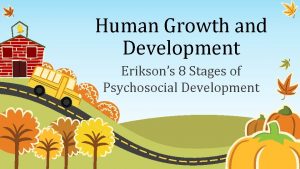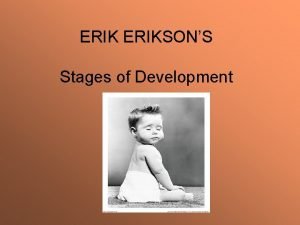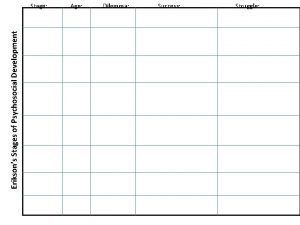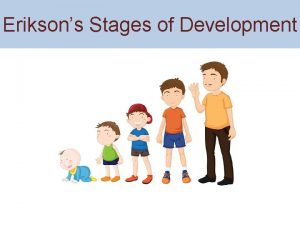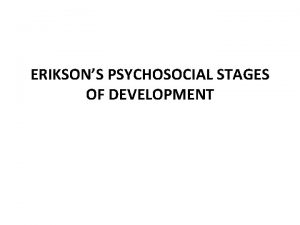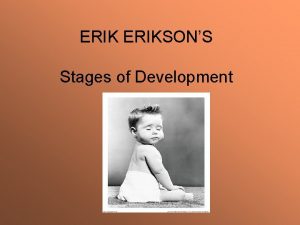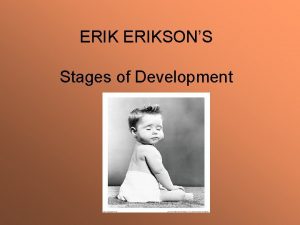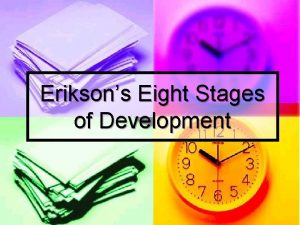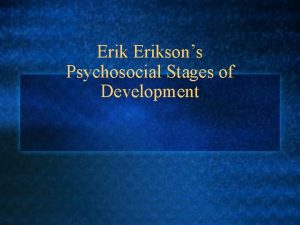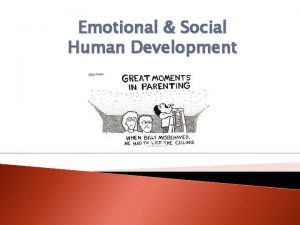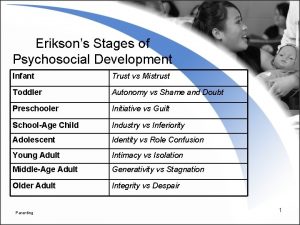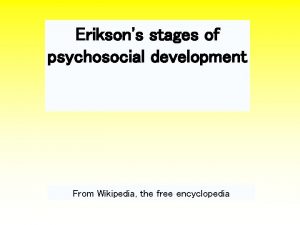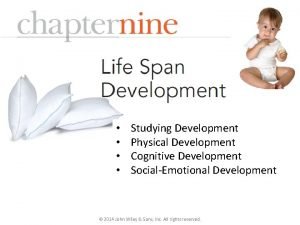Chapter 8 Eriksons SocialEmotional Development Stages and a






















- Slides: 22

Chapter 8: Erikson’s Social-Emotional Development Stages and a Comparison with the Bingham-Stryker model Erikson (1902 -1994)

Importance of Crisis in Erikson’s Social-Emotional Development Stages The social environment combined with biological maturation provides each individual with a set of "crises" that must be resolved.

According to Erikson: The individual is provided with a period to resolve each crisis before a new crisis begins. Crisis Resolution Crisis The results of the resolution, whether successful or not, are carried forward to the next crisis and provide the foundation for its resolution.

Erikson Proposed in his Theory that there were Eight Stages of Socio-emotional Development.

First Stage Infancy: Trust vs. Mistrust The child develops a belief that the environment can be counted on to meet his or her basic physiological and social needs.

Second Stage Toddlerhood: Autonomy vs. Shame and Doubt Child learns what he can control and develops a sense of free will and corresponding sense of regret and sorrow for inappropriate use of self-control.

Third Stage Early Childhood: Initiative vs. Guilt Child learns to begin action, to explore, to imagine as well as feeling remorse for actions.

Fourth Stage Middle Childhood: Accomplishment vs. Inferiority Child learns to do things well or correctly in comparison to a standard or to others.

Fifth Stage Adolescence: Identity vs. Role Confusion Develops a sense of self in relationship to others and to own internal thoughts and desires.

Sixth Stage Young Adult: Intimacy vs. Isolation • Develops ability to give and receive love. • Begins to make long-term commitment to relationships.

Seventh Stage Middle Adulthood: Generativity vs. Stagnation Develops interest in guiding the development of the next generation.

Eighth Stage Older Adulthood: Ego Integrity vs. Despair Develops a sense of acceptance of life as it was lived and the importance of the people and relationships that the individual developed over the lifespan.

Expanding Upon Erikson’s Theory Bingham and Stryker (1995) propose five stages of socio-emotional development for girls and women that parallels those proposed by Erikson.

Developing the Hardy Personality Through Age 8 • Feel in control of own life. • Committed to specific activities. • Look forward to challenge and opportunity for growth.

Forming an Identity as an Achiever Age 9 -12 Develop steady, durable core of self as person who is capable of accomplishment in a variety of areas.

Skill Building for Self-Esteem Age 13 -16 • Feeling of being worthy and deserving. • Entitled to assert needs and wants. • Confidence in ability to cope with life.

Strategies for Self-Sufficiency Age 17 -22 Sense of responsibility for taking care of herself and, perhaps, a family.

Satisfaction of Work and Love Age: Adulthood Contentedness in personal accomplishments and social/personal relationships.

According to Bingham and Stryker (1995) “The importance of self-esteem for girls in the adolescent years cannot be overemphasized. ”

Studies show that girls have a precipitous drop in self-esteem between elementary and high school. The decline in boys self-esteem is not nearly as dramatic.

Difference between the Erikson and Bingham-Stryker models is in the stage of early adulthood. In Erikson's model the crisis is intimacy versus isolation. In the Bingham-Stryker model the crisis is emotional and financial self-sufficiency.

References Bingham, M. , & Stryker, S. (1995). Things will be different for my daughter: A practical guide to building her self-esteem and self-reliance. New York: Penguin Books. Huitt, W. (2008). Socioemotional development. Educational Psychology Interactive. Valdosta, GA: Valdosta State University. Retrieved from http: //www. edpsycinteractive. org/topics/affect/erikson. html
 Industry vs. inferiority
Industry vs. inferiority Erikson adolescent stage
Erikson adolescent stage Freuds faser
Freuds faser Stages of human growth and development pictures
Stages of human growth and development pictures Reflexive phase of motor development
Reflexive phase of motor development Stages of human growth and development pictures
Stages of human growth and development pictures Stages of human growth and development pictures
Stages of human growth and development pictures Stages of growth
Stages of growth 6 life stages
6 life stages Moral and spiritual development stages
Moral and spiritual development stages Rice growth stages
Rice growth stages Kellogg's developmental stages of art for early childhood
Kellogg's developmental stages of art for early childhood Life of a blowfly
Life of a blowfly Model taba
Model taba Deposition
Deposition Stages of soil development
Stages of soil development Uncontrolled scribbling examples
Uncontrolled scribbling examples Steps of community development process
Steps of community development process 4 stages of multimedia project
4 stages of multimedia project Teenage brain development stages
Teenage brain development stages Levinson stages of development
Levinson stages of development Levinson stages of development
Levinson stages of development Stages of literacy development
Stages of literacy development


